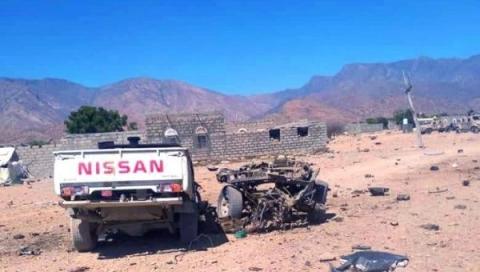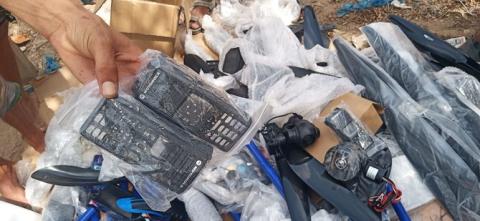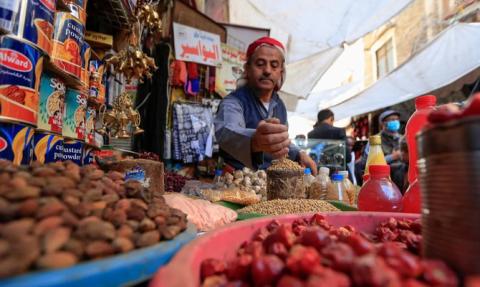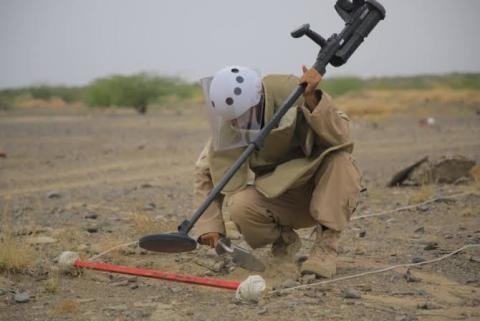Disappearance and torture.. The anniversary of the establishment of Yemeni Muslim Brotherhood turns into an occasion to expose the crimes of the organization


Violence and civil wars, including support for the Houthi coup to create ideological militias, "bloody" stations in the history of the Brotherhood in Yemen, were a "setback" for the Asian country.
Those "bloody" stations, which began 28 years ago, with the Brotherhood's participation in the bloody cycles of violence and civil wars since the 1994 war, the organization was counting on the peoples' memory to forget them while it was on the other side trying to evade them.
However, the Brotherhood’s persistence in its denunciation and its quest to empower its elements, taking this path all the forbidden ways, until it came to “serving” with Al-Qaeda and the Houthi militias, around a political celebration held by the Brotherhood’s Islah Party in the city of Taiz, for a book of pain and wounds, after it I witnessed the presence of Yemeni families demanding the disclosure of the fate of their children.
Restoration of the Brotherhood's facade
While the Brotherhood tried to restore its political façade "stained with the blood of innocents", by celebrating its founding anniversary in Yemen, it collided with the presence of women, children and young men carrying pictures of a number of forcibly disappeared in the Brotherhood's detention centers in the city of Taiz, numbering more than 84 people, including prominent political activists, in An explicit message rejecting the Brotherhood's crimes.
On Saturday, a number of families and the forcibly disappeared demonstrated in a protest in front of the "Taiz Tourist Club" building, which was hosting the Brotherhood's Reform Party, accusing the latter of forcibly disappearing their children for years, led by political activists: Ayoub Al-Salihi, Akram Hamid, Ahmed Essam Al-Aghbari and Muhammad Bashir Qatari.
The protesters denounced what they described as the "silence" of the local authorities, demanding the speedy detection of the forcibly disappeared and their immediate release, noting that "political propaganda will not suppress the crimes of the detainees," as they put it.
The protesters called on the Presidential Council and the Yemeni government to take quick measures regarding the cases of the forcibly disappeared in Taiz, to work for the release of those arbitrarily detained, and to reveal cases of deaths in unofficial places of detention.
spontaneous message
For his part, the executive official of the Follow-up Committee for the Forcibly Disappeared in Yemen, Ahmed Al-Mabaqi, said in a statement that "Al-Ain News" reviewed a copy of it, that "the vigil was spontaneous and without prior preparation, indicating that some of the families and families of the disappeared launched it in response to the effectiveness of the Brotherhood's Islah Party." .
The human rights official described the vigil as “the largest message and the greatest human rights discourse directed to the Taiz authority represented by its parties and military and security leaders” loyal to the Brotherhood, noting that “at the moment when the political, military and security elites were singing the voices of anthems and speeches filled with falsehood, charlatanism and fallacies, the families of the disappeared were the only ones.” Those who honestly express the pain and pain of Taiz."
The "ugliness" of the Brotherhood
The vigil revealed to local and international public opinion, "the ugliness of this tyrannical authority that does not recognize human freedom and the right to a decent life," in reference to the Brotherhood's influence in the city of Taiz, which is described as the most important stronghold of the terrorist organization.
Al-Mabaqi had estimated, in press statements, the number of victims of enforced disappearance in Taiz at 84 cases of enforced disappearance, amid indications that the numbers are much more than what was monitored, and that the findings of the Committee for the Enforced Disappeared are not a final statistic.
The ages of those who have been subjected to enforced disappearance range between (16-65) years and are detained in unofficial detention centers, and while the fate of some of them was revealed after changing their places of detention, they remained hostages and their cases were not referred to the judicial authorities for adjudication.
Enforced disappearance is considered a humanitarian crime, and it criminalizes the invocation of any exceptional circumstance, whether related to the state of war or the threat of war, internal political instability, or any other exceptional case to justify the crimes of enforced disappearance, according to the Yemeni human rights defender.

Yemeni officials on Monday condemned arrests and prosecutions by the Iran-backed Houthi militia directed against media, journalists and celebrities…

Yemen's warring parties are gearing up for new waves of conflict in 2023 amid a lack of decisive steps towards sustainable peace, adding to the suf…

The UAE will help to recruit doctors and deliver crucial supplies for hospitals in Yemen under a major healthcare drive. The Khalifa bin…